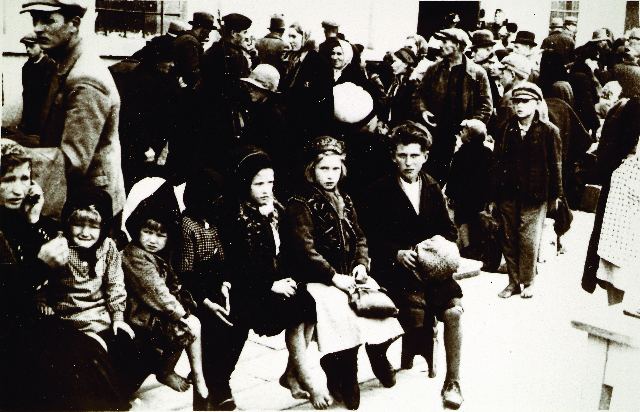The German occupying authorities quickly concluded that it would not be sufficient just to expel the locals and introduce German settlers in areas annexed by the Third Reich. Economic arguments strongly suggested that locals could be Germanised and as they became Germans they could also provide new recruits for the Wehrmacht. As their economic condition improved, they would be likely to work harder. Hitler therefore permitted mass Germanisation of people in Silesia and Pomerania.
Children were subject to an inhumane form of Germanisation. In 1941, Himmler allowed them to be kidnapped in the Wartheland. In 1942, this began across all the occupied territories, particularly where expulsions were taking place such as the Zamość region. Polish children who met the Nazi racial characteristics were sought out.

Orphanages were the obvious first target. Then children whose parents had been arrested or whose parents had been sent away for forced labour. Various institutions were involved such as the Reich Office for Strengthening the German Race, the SS Head Office for Race and Resettlement, the Repatriation Office for Ethnic Germans (VOMI) and Lebensborn.
Families from Pomerania, Wielkopolska, and Kujawy as well as children who were considered to be suitable were placed in the Łódź branch of the SS Race and Resettlement Office at ulica Sporna. Here they were further examined to ensure that they had the necessary Aryan qualities. Various racial tests were carried out in various locations. They were very detailed, carried out by ‘experts’ from the race office or by doctors. Children were assessed by 62 criteria. This included eye and hair colour, height, weight as well as body and skull shape. On this basis, the child was assigned to one of eleven racial groupings. The children who failed the race tests were sent to concentration camps, some of which were created especially for them such as at Łódź and Konstantynów. When genetic disorders were discovered, sometimes the children were killed in the euthanasia programme or cruel experiments were carried out on them.

Those that passed the race tests were sent to Germanisation schools for the older children and the youngest were sent to Lebensborn camps. They learned to speak German. Slow learners were beaten. Serious punishments were given for speaking Polish. They could have no contact with their family. Details of the children were removed from the municipal registration files. They were given a new German name and their date of birth was changed. Once this was complete the children were put up for adoption with German families.
The Germans also took children from eastern Poland (today Ukraine) where in 1944, Army Group Centre and the ninth army arrested tens of thousands of children who were sent for Germanisation.
It is hard to establish how many Polish children were sent for Germanisation. The total is between 50000 and 200000. The Polish Red Cross believes that between fifteen and twenty percent returned to their families after the war. The problem was this. It was wrong to have taken them from their birth parents and then wrong again to take them from their adopted parents. The young did not remember their parents and could not speak Polish. They were considered to be Germans and as such suffered discrimination and stigmatization when they returned to Poland.
Relations